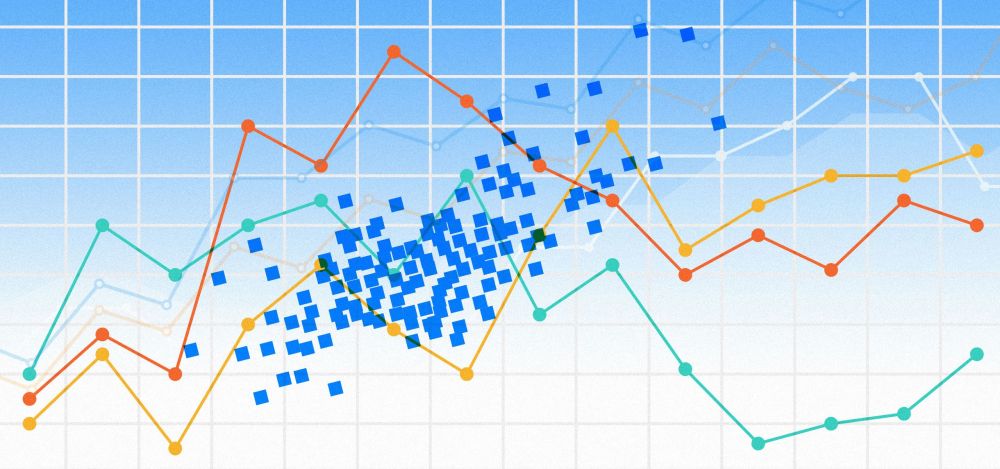R squared trading strategy
R-squared (R2) is a statistical measure that represents the proportion of the variance for a dependent variable that’s explained by an independent variable or variables in a regression model.
If your head still hurts from gauge theory, perhaps that wasn’t the best way for us to open this blog. We’re sorry… but R-squared is important and today we’re going to delve deep into why.
Ok, let’s start again. In layman’s terms, R-squared is the measure of your trading performance that is dictated by how the market you are trading actually performs. R-squared is measured from 0% to 100% with anything above 70% being correlated and anything below 40% being noncorrelated. So, if you have an R-squared of 50%, then half of your performance is explained by the market itself and the other have is explained by your inputs, your strategy and your blood, sweat and tears (too much?).
If you did nothing other than buy and hold the S&P, your R-squared would be 100% (all performance is explained by the S&P itself). But as soon as you begin trading that market, your performance and thus your R-squared begins to change as well.
A falling R-squared as you begin to underperform the markets indicates you’re taking value out of simply buying and holding. This is bad 👎.
A falling R-squared as you begin to overperform the markets indicates the value you are adding by trading rather than buying and holding. This is good 👍.
I’ve seen R-squared trading strategy and linear regression tools. Are these useful?
No! Next question.
Ok fine… we’ll answer. But first you should start by reading our blog from a few weeks ago about technical analysis. When you’re finished reading that, continue here.
R-squared and linear regression tools are advertised as a way to determine the strength of a trend. According to the site shown below, these indicators can be used to determine the “random noise” in the market while also applying a confidence level to a trend. They also use other big words like oscillators, critical value and slope.
Now our heads hurts.

Notice the ads for forex brokers there? When you click on those ads, this site gets paid based on the frequency of your trading. Remember what we said about tools offered by forex brokers? They are used to get you to trade more frequently, not more profitably. Look at the right side of the page… an entire table of contents of indicators all designed to increase your trading frequency.
To answer the question again, there is absolutely no value in an indicator that looks for correlation in order to determine a trend and thus a trade. And there is no indicator or mathematical process that can determine “random noise.” It’s simply nonsense.
Is your trading highly correlated with the market? Is that a good or bad thing?
A low R-squared is not necessarily good while a high R-squared is not necessarily bad. Your target R-squared can change based on your goals. Fixed-Income, Index funds and Real Estate investors often look for high R-squared (between 85% and 100%). Traders often look for R-squared figures below 50%. An index fund investor with low correlation (low R-squared) would be horrified while a trader with high correlation isn’t providing any value.
As a trader, the more systematic and emotionless your strategy becomes, the lower your R-squared should be. If you are beating the market, this low figure shows you are providing value above and beyond what the market itself is providing.
For example, when trading only the S&P alone, the fractalerts’ R-squared to the S&P is 0.39%. This means only 0.39% of our performance can be explained by what the market has done. The remaining 99.61% is because of our programs.
With Gold, our R-squared is 0.09%.
In the Grains (markets that are heavily impacted by news and reports), our figure is a staggering 0.03%. In other words, reports, news, supply / demand statistics and other variables have had absolutely no impact on our performance over time.
Conclusion
R-squared is a tool that should be used when evaluating a strategy, fund or longer term investment. Depending on your goals, this metric tells you a lot about the manager and the value they bring to the table. It allows you to evaluate a system to determine how similar it is to what you are already doing. Low R-squared strategies bring strategy diversification, generally lower standard deviations and higher sharpe ratios.
-

Consistency Isn’t the Goal—It’s the Outcome
-

What 2 Quadrillion Data Points Told Us
-

Math and Physics-Based Trading in Any Market Condition
-

Do not worry about anomalies
-

Consistency should not be the goal. Consistency should be the result.
-

Stop canceling fridays
-

The Elliott Wave Forecast is Subjective, Bias Driven And Backwards looking
-

Finding patterns in market data
-

Taking profits through the trade timeline
-

What is your win ratio and you really want to know?

